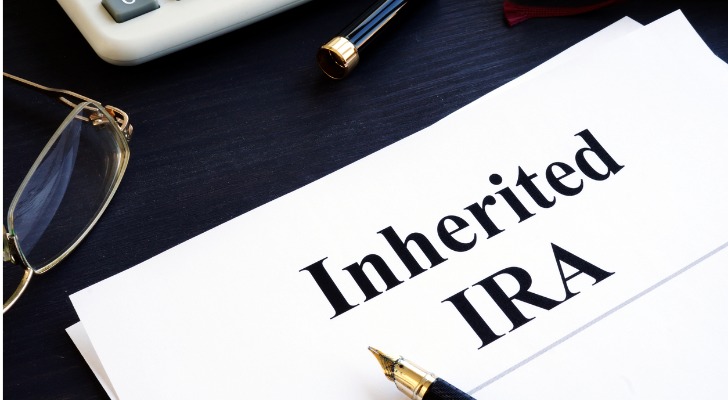I am 74 years old (I was born Feb 2, 1948). My wife and I both worked for Aetna, but have retired and have 401(k)s from work that are with Vanguard. I received her 401(k) as a spousal inheritance and maintain it in a separate account. I plan to take RMDs on her account but I’m not sure if I have the option to take the RMDs based upon her age or my age. She had not begun taking RMDs on her account because she was not 72. Can you confirm which age (hers or mine) I should use for the first RMD withdrawal, and by what date does that RMD need to be taken? I believe there is a provision in the law that indicates that with spousal inheritance you don’t have to begin taking RMDs from an inherited account for a year after the year of death.
– Gary
The date and amount of that first required minimum distribution (RMD) depend on what you decide to do with the inherited 401(k). The answer will vary based on whether you roll the funds into your own 401(k) or IRA; transfer the account to an inherited IRA and take RMDs from it; transfer the money into an inherited IRA and follow what’s called the 10-year rule; or do a Roth conversion. Here’s a closer look at those options and what they mean for RMDs. (And if you need more help planning for RMDs or taxes in retirement, speak with a financial advisor.)
Option #1: Roll Into Your Own 401(k) or IRA
As a surviving spouse, you have the option of rolling the inherited 401(k) into your own 401(k) or IRA. You could roll it into an existing account open open a new IRA to receive the rollover.
If you go this route, the money will be treated as yours and become subject to the same RMD requirements as if you had held it in your account all along. Since you are 74 and no longer working, you would need to take an RMD by Dec. 31 and the amount would be calculated using your age and the Uniform Lifetime Table. (But if you need more help calculating your RMDs, consider matching with a financial advisor.)
Option #2: Transfer Into an Inherited IRA and Take RMDs

Instead of rolling it into your own IRA, you could instead transfer it into an inherited IRA. This has the benefit of allowing you to delay RMDs until the later of two deadlines:
- Dec. 31 of the year in which your spouse would have turned 73
- Dec. 31 of the year following her death
In your case, it sounds like this would allow you to wait a couple of years before taking RMDs. As long as you take your first RMD by Dec. 31 of the year your wife would have turned 73, you should avoid penalties.
At that point, however, RMDs would still be calculated based on your age. You would not be able to use your wife’s age to reduce the RMD amount. (A financial advisor may be able to help you manage inherited retirement accounts and other assets.)
Option #3: Transfer Into an Inherited IRA and Follow the 10-Year Rule
Since RMDs had not already started, you could choose not to take RMDs at all as long as the entire account is distributed by Dec. 31 of the 10th year after your wife’s passing.
This would save you the hassle of calculating RMDs during those first nine years, and it would save you taxes in those years as well. However, it could lead to a much bigger tax bill in that 10th year, and the entire balance would have to be distributed much earlier than if you were taking RMDs according to the Uniform Lifetime Table. (And if you need help finding a financial advisor to guide you through this process, this tool can pair you with up to three advisors who serve your area.)
Option #4: Convert to a Roth IRA

Another option would be to convert some or all of the inherited 401(k) balance to a Roth IRA. This would eliminate the need for RMDs for the amount that’s converted since Roth IRAs aren’t subject to RMDs.
It would, however, subject the conversion amount to taxes during that year. That could benefit you if you’re likely to be in a higher tax bracket later in retirement. Otherwise, it may not be worth the cost.
Bottom Line
You’ll likely be best off with either the first or second option since they both allow you to spread those distributions out over your lifetime. The primary difference is when those RMDs have to begin. If you transfer the assets into your own account, they will be part of your RMD calculation for this year. If you keep the assets in an inherited IRA, you can wait until the year in which your spouse would have turned 73 before taking RMDs. The required distribution amounts will still be based on your age, but those extra tax-deferred years could be beneficial.
Tips for Finding a Financial Advisor
- Finding a financial advisor doesn’t have to be hard. SmartAsset’s free tool matches you with up to three vetted financial advisors who serve your area, and you can have a free introductory call with your advisor matches to decide which one you feel is right for you. If you’re ready to find an advisor who can help you achieve your financial goals, get started now.
- Consider a few advisors before settling on one. It’s important to make sure you find someone you trust to manage your money. As you consider your options, these are the questions you should ask an advisor to ensure you make the right choice.
Matt Becker, CFP®, is a SmartAsset financial planning columnist and answers reader questions on personal finance and tax topics. Got a question you’d like answered? Email AskAnAdvisor@smartasset.com and your question may be answered in a future column.
Please note that Matt is not a participant in the SmartAdvisor Match platform, and he has been compensated for this article.
Photo credit: ©iStock.com/designer491, ©iStock.com/Cecilie_Arcurs
